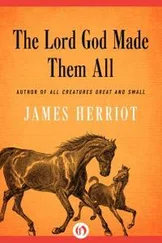As he climbed out of the shaft for the last time he went through the postern gate to the cemetery beside which, years ago, he had buried Meshab the Moabite when no others would touch him, and there he sat on the grave recalling their good days of friendship and shared work, perhaps the only thing an engineer remembers. It was a spring day and he was inspired to climb the mountain where Baal resided, for he would like to be with his old god once more; but it was a steep path and as he rose from the Moabite’s grave a sudden dizziness overtook him, and he sensed that death was at hand, and he sat down again.
“Almighty Yahweh,” he prayed, “accept me at the end of my days.” And he was dead.
Of Gershom the Psalmist, his words echoed to the end of the world. Of Hoopoe the Builder, his great square shaft was ultimately filled with rubble, and his tunnel forgotten. For the poet, regardless of the expense in human lives, had glimpsed the true face of Yahweh and had dedicated himself to the one god. But the builder had early found himself trapped between Baal, whom he knew to exist in the earth, and Yahweh, whom he was willing to accept as the unseen deity; and it is impossible for any man to vacillate between two gods: if he tries he is slowly eroded. On the afternoon of his death Hoopoe recognized these facts and wished that he had had the clear understanding of King David and Gershom and his beloved wife Kerith. But their understanding had been denied him and he died a useless old man, trapped by his gods.
But in the autumn of 1964, in the month of Bul—when rain clouds make their first tentative appearance over the Carmel and farmers gather wood for winter fires—a descendant of the great Family of Ur stumbled upon the long-forgotten tunnel, and shortly it was excavated, with photographs of the notable work becoming common throughout the world. Engineers hailed it as a masterpiece of construction, “one of the first great surveying feats,” and in an age that appreciated science many words were written on the timeless message which the unknown engineer of Makor had sent the world; a French philosopher claimed that “this mute genius of the Makor water system speaks to modern man more cogently than those who wrote the Psalms, for he exemplified in work that portion of the divine spirit which has always prized acts as much as words. His tunnel is a psalm in fact, the song of those who accomplish God’s work.”
And then one day the American archaeologist John Cullinane would discover the real psalm of Tell Makor. Each part of the tunnel would by then have been investigated by experts, who would cleverly deduce how the unknown builder must have operated: they would reason that he had punched two small tunnels through the rock, joining them somewhere near the middle, then broadening them out to absorb the error, but they would not be able to guess how he had established his pitch and headings underground, for age and lichen had dimmed the ceiling so that carvings which existed there were long overlooked. But on this day Cullinane would be walking through the tunnel guided by a cheap flashlight and his wandering eye would catch a kind of shadow on the rocks above. Calling for a ladder he would examine the damp roof, then summon his assistants. With infrared photography, with talcum powder and camel’s-hair brushes, the archaeologists would lay bare a dedication whose effect upon scholarship would be pronounced for several reasons. It would provide one of the earliest samples of Hebrew writing; establish an anchor for a sure chronology; and evoke from the past the figure of a real human being wrestling with problems. The same French philosopher would title this inscription “The Psalm of the Tunnel Builder,” under which title it would serve to summarize the age:Jabaal of Makor built this David Tunnel. Using six flags he found the secret. Using white cords he probed the earth. Using iron from Aecho he cut the rock. But without Meshab the Moabite nothing. Jabaal worked from the well and wandered. Meshab from the shaft and true. For Meshab was his brother and is now dead, slain by King David. From the heavens Yahweh directed. From the earth Baal. Praise to the gods who sustain us.
LEVEL
XI
The Voice of Gomer
Babylonian armament. Left: Iron spearhead cast in the city of Urartu (Ararat) on the northern shore of Lake Van in Asia Minor, 684 B.C.E., and traded southward to Babylonia in exchange for woven fabrics. Originally fitted to the end of a four-foot cedar stave imported from Tyre. Right: Helmet in the Assyrian style, made of hammered bronze fitted with bronze rivets, made in 653 B.C.E. in the city of Shushan (Susa), capital of Elam on the border between Babylonia and Persia and traditionally antagonistic to the former. Deposited at Makor in late summer, 605 B.C.E.
These were the generations when Yahweh smote his Hebrews, for still he found them a stiff-necked people.
To punish them he used the Assyrians. In 733 B.C.E. he unleashed Tiglath-pileser III from Nineveh, and of his depredations the Bible says: “In the days of Pekah king of Israel came Tiglath-pileser king of Assyria … and took Hazor, and Gilead, and Galilee, all the land of Naphtali, and carried them captive to Assyria.” In this onslaught 185,000 people were slain and 591 towns were ravaged, but not Makor, for the defenses erected by Jabaal the Hoopoe held off the invaders through a formidable siege until an agreement of suzerainty was worked out. But in 701 B.C.E. Sennacherib came out of the north, and of him the Bible says: “Now in the fourteenth year of king Hezekiah did Sennacherib king of Assyria come up against all the fenced cities of Judah, and took them.” Even against this scourge Makor defended itself, protected by its David Tunnel, until at last the Assyrians appealed for negotiation, whereupon the community opened its zigzag gate voluntarily. At dawn Sennacherib entered the town; by noon he had assembled the tribute; and at dusk there was not a single house standing. Makor, gutted and burned, its walls thrown down in many places, had ceased to exist, and its Hebrew inhabitants were led away in slavery to join those Ten Tribes of the north who would henceforth be lost to history if not to legend: fanciful writers would try to prove that these lost Jews found new existence as Britons, Etruscans, Hindus, Japanese or Eskimos.
To castigate his Hebrews, Yahweh also used the Babylonians. In the year 612 B.C.E. this rising power humbled Nineveh, driving the Assyrians from the two rivers, and in 605 the mighty Nebuchadrezzar led his troops into one of the significant battles of history at Carchemish along the banks of the Euphrates. Of him the Bible says: “For thus saith the Lord God; Behold, I will bring upon Tyrus Nebuchadrezzar king of Babylon, a king of kings, from the north, with horses, and with chariots, and with horsemen, and companies, and much people. He shall slay with the sword thy daughters in the field: and he shall make a fort against thee, and cast a mount against thee, and lift up the buckler against thee. And he shall set engines of war against thy walls, and with his axes he shall break down thy towers.” And these things Nebuchadrezzar did.
And invariably Yahweh used the Egyptians to accomplish his purposes, throwing them sometimes against Assyria, sometimes against Babylonia, but always against the Hebrews, so that during these dynastic struggles the armies of Egypt were much seen in the Galilee; regardless of who the enemy was, the battles were apt to be fought here. For example, in 609 B.C.E. Josiah, one of the wisest kings the Hebrews were to produce, must have suffered a temporary derangement, for he entered a pact of mutual support on the side of upstart Babylon against established Egypt and Assyria. Of the pitiful battle that resulted the Bible says: “Necho king of Egypt came up to fight against Carchemish by Euphrates: and Judah went out against him.” The confrontation between Egyptian and Hebrew took place at Megiddo, that recurring site of Armageddon, and the good king Josiah was slain. Always the Egyptians were a threat.
Читать дальше
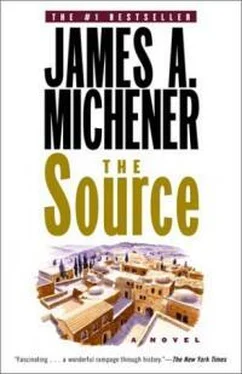
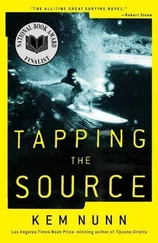



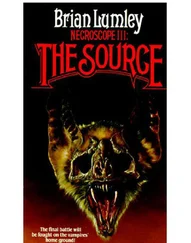
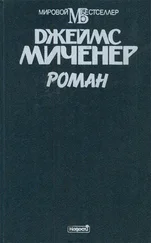
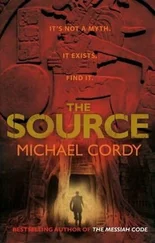
![Джеймс Купер - Пионеры, или У истоков Саскуиханны [The Pioneers, or The sources of the Susquehannah]](/books/395797/dzhejms-kuper-pionery-ili-u-istokov-saskuihanny-t-thumb.webp)
